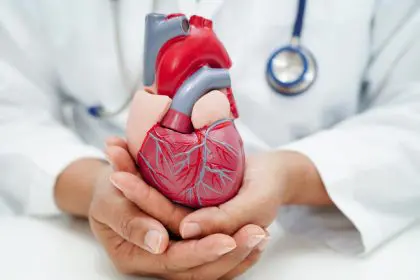The heart works tirelessly throughout life, pumping approximately 2,000 gallons of blood daily through a complex network of vessels that nourish every cell in the body. When this vital organ begins to weaken, it often sends subtle signals long before a major cardiac event occurs. Understanding these early warning signs can make the difference between timely intervention and potentially life-threatening complications.
Heart weakness, medically known as heart failure or cardiomyopathy, develops gradually as the heart muscle loses its ability to pump blood efficiently. This condition affects millions of people worldwide, yet many remain unaware of the early symptoms that could prompt life-saving medical attention. The heart’s remarkable ability to compensate for declining function often masks these warning signs until the condition becomes more advanced.
Modern lifestyle factors including sedentary behavior, processed food consumption, chronic stress, and environmental toxins place unprecedented demands on cardiovascular health. These pressures, combined with genetic predispositions and aging processes, can compromise heart function over time. Recognizing the early indicators allows for proactive measures that can slow or even reverse certain types of heart damage.
The key to maintaining cardiovascular health lies in understanding how a weakening heart manifests its struggle through various body systems. These warning signs often appear in combinations rather than isolation, creating patterns that trained medical professionals can identify and address before irreversible damage occurs.
1. Persistent fatigue that worsens with minimal activity
Unexplained exhaustion represents one of the earliest and most common indicators of declining heart function. When the heart cannot pump blood efficiently, organs and muscles receive inadequate oxygen and nutrients, leading to overwhelming fatigue that rest cannot resolve. This differs significantly from normal tiredness after physical exertion or insufficient sleep.
The fatigue associated with heart weakness typically worsens progressively over weeks or months. Activities that once felt effortless, such as climbing stairs, carrying groceries, or walking short distances, begin requiring significant effort and recovery time. The exhaustion often feels disproportionate to the activity level, leaving individuals feeling drained after minimal exertion.
This type of fatigue stems from the heart’s inability to increase its output to meet the body’s demands during physical activity. As heart function declines, the organ struggles to deliver adequate blood flow to working muscles, causing them to switch to less efficient energy production methods that generate fatigue more quickly.
The fatigue may also result from poor sleep quality, as a weakening heart can cause breathing difficulties during rest periods. When the heart cannot maintain adequate circulation while lying flat, fluid may accumulate in the lungs, leading to interrupted sleep and daytime exhaustion.
Morning fatigue that persists despite adequate sleep often signals that the heart worked harder than normal during rest periods to maintain circulation. This continuous strain prevents the restorative processes that typically occur during sleep, leaving individuals feeling unrefreshed upon waking.
2. Shortness of breath during routine activities
Breathing difficulties that develop during previously manageable activities indicate the heart’s declining ability to meet the body’s oxygen demands. This breathlessness, known medically as dyspnea, often begins subtly but progresses to affect increasingly simple tasks as heart function deteriorates.
Initially, shortness of breath may only occur during vigorous exercise or when climbing multiple flights of stairs. However, as heart weakness progresses, breathing difficulties can develop during routine activities like showering, getting dressed, or walking across a room. The progression from exercise-induced breathlessness to rest-related breathing problems signals advancing heart dysfunction.
The mechanism behind this symptom involves the heart’s inability to pump sufficient blood to meet increased oxygen demands during physical activity. When tissues cannot receive adequate oxygen through normal circulation, the respiratory system attempts to compensate by increasing breathing rate and depth. This compensation becomes increasingly insufficient as heart function declines.
Breathing difficulties may also occur when lying flat, a condition called orthopnea. This happens because the horizontal position allows fluid that has accumulated in the lower extremities to return to the circulation, overwhelming an already struggling heart. Many individuals find they need to sleep propped up on multiple pillows or in a reclining chair to breathe comfortably.
Sudden episodes of severe breathlessness, particularly at night, may indicate acute fluid accumulation in the lungs. These episodes often awaken individuals from sleep and may be accompanied by anxiety, sweating, and a sense of impending doom. Such symptoms require immediate medical attention as they may signal a cardiac emergency.
3. Swelling in legs, ankles, and feet
Fluid retention in the lower extremities represents a classic sign of heart failure, occurring when the weakened heart cannot maintain adequate circulation throughout the body. This swelling, medically termed peripheral edema, typically begins in the feet and ankles before progressing upward to the legs and potentially the abdomen.
The swelling associated with heart weakness differs from temporary puffiness caused by prolonged standing or high sodium intake. Cardiac-related edema tends to be persistent, worsening throughout the day and improving only slightly with elevation. The swelling often leaves indentations when pressed, indicating significant fluid accumulation in the tissues.
This fluid retention occurs because the struggling heart cannot pump blood effectively from the extremities back to the central circulation. Blood pools in the veins of the legs and feet, increasing pressure that forces fluid from blood vessels into surrounding tissues. The body’s compensatory mechanisms, including hormonal changes that promote fluid retention, further exacerbate this problem.
Weight gain often accompanies the visible swelling, as the body retains several pounds of excess fluid. Individuals may notice their shoes becoming tight, rings fitting poorly, or clothing feeling snug around the waist. This weight gain typically occurs rapidly over days or weeks rather than the gradual increase associated with dietary changes.
Severe fluid retention may extend beyond the lower extremities to include the abdomen, where it can cause bloating, discomfort, and reduced appetite. In advanced cases, fluid may accumulate around the lungs or heart itself, creating additional complications that require immediate medical intervention.
4. Rapid or irregular heartbeat patterns
Changes in heart rhythm often signal that the cardiac muscle is working harder to maintain adequate circulation or that the heart’s electrical system has been affected by structural changes. These rhythm disturbances can manifest as a racing heartbeat, skipped beats, or irregular patterns that create noticeable sensations in the chest.
A rapid heartbeat at rest, medically known as tachycardia, may develop as the heart attempts to compensate for its weakened pumping ability by beating faster. While a healthy heart can increase its rate during exercise and return to normal during rest, a struggling heart may maintain elevated rates even during quiet activities or sleep.
Irregular heartbeats, called arrhythmias, can feel like fluttering, pounding, or skipping sensations in the chest. These irregularities may occur sporadically or become persistent, depending on the underlying heart condition. Some individuals describe feeling like their heart stops momentarily or beats in an uneven pattern that disrupts normal activities.
Palpitations accompanied by chest discomfort, dizziness, or shortness of breath require immediate medical evaluation, as they may indicate dangerous rhythm disturbances. These symptoms suggest that the heart’s compromised function is affecting its ability to maintain stable electrical activity and adequate blood flow to vital organs.
The awareness of heartbeat irregularities often increases as individuals become more attuned to their body’s signals in response to declining energy levels and other symptoms. While occasional irregular beats are common and usually harmless, persistent or frequent rhythm changes warrant medical assessment to determine their relationship to overall heart health.
5. Persistent cough with pink or white frothy mucus
A chronic cough that develops without obvious respiratory illness may indicate fluid accumulation in the lungs due to heart failure. This cardiac cough typically produces pink-tinged or white frothy sputum and often worsens when lying flat or during physical activity.
The cough develops when the weakened heart cannot effectively pump blood from the lungs back to the left ventricle. This causes blood to back up in the pulmonary vessels, increasing pressure that forces fluid from blood vessels into the air sacs of the lungs. The resulting pulmonary edema triggers coughing as the body attempts to clear the excess fluid.
Unlike coughs associated with respiratory infections, cardiac coughs tend to be persistent and may worsen over time without responding to typical cough medications. The cough may be dry initially but often progresses to produce frothy secretions that may contain traces of blood, giving them a pink coloration.
Nighttime coughing episodes are particularly common with heart-related respiratory symptoms. The horizontal sleeping position allows fluid that has accumulated in the lower body during the day to redistribute toward the lungs, triggering coughing fits that can disrupt sleep and contribute to daytime fatigue.
The presence of blood in respiratory secretions, even in small amounts, requires immediate medical attention as it may indicate acute heart failure or other serious cardiac complications. This symptom suggests that the pressure in lung blood vessels has become dangerously elevated, potentially leading to life-threatening complications without prompt treatment.
Recognizing patterns and seeking timely care
These warning signs rarely appear in isolation but typically develop as interconnected symptoms that reflect the heart’s declining ability to meet the body’s circulatory needs. The combination of persistent fatigue, breathing difficulties, swelling, rhythm changes, and respiratory symptoms creates a pattern that medical professionals can recognize and address through comprehensive cardiac evaluation.
Early recognition of these warning signs enables interventions that can significantly improve outcomes and quality of life. Lifestyle modifications, medications, and medical procedures can often slow or reverse certain types of heart damage when implemented before the condition becomes severely advanced. The key lies in taking these symptoms seriously and seeking medical attention promptly rather than attributing them to normal aging or temporary health issues.
Understanding these warning signs empowers individuals to become active participants in their cardiovascular health, potentially preventing the progression from early heart weakness to life-threatening complications. Regular medical check-ups, attention to symptom patterns, and honest communication with healthcare providers create the foundation for maintaining heart health throughout life.
















